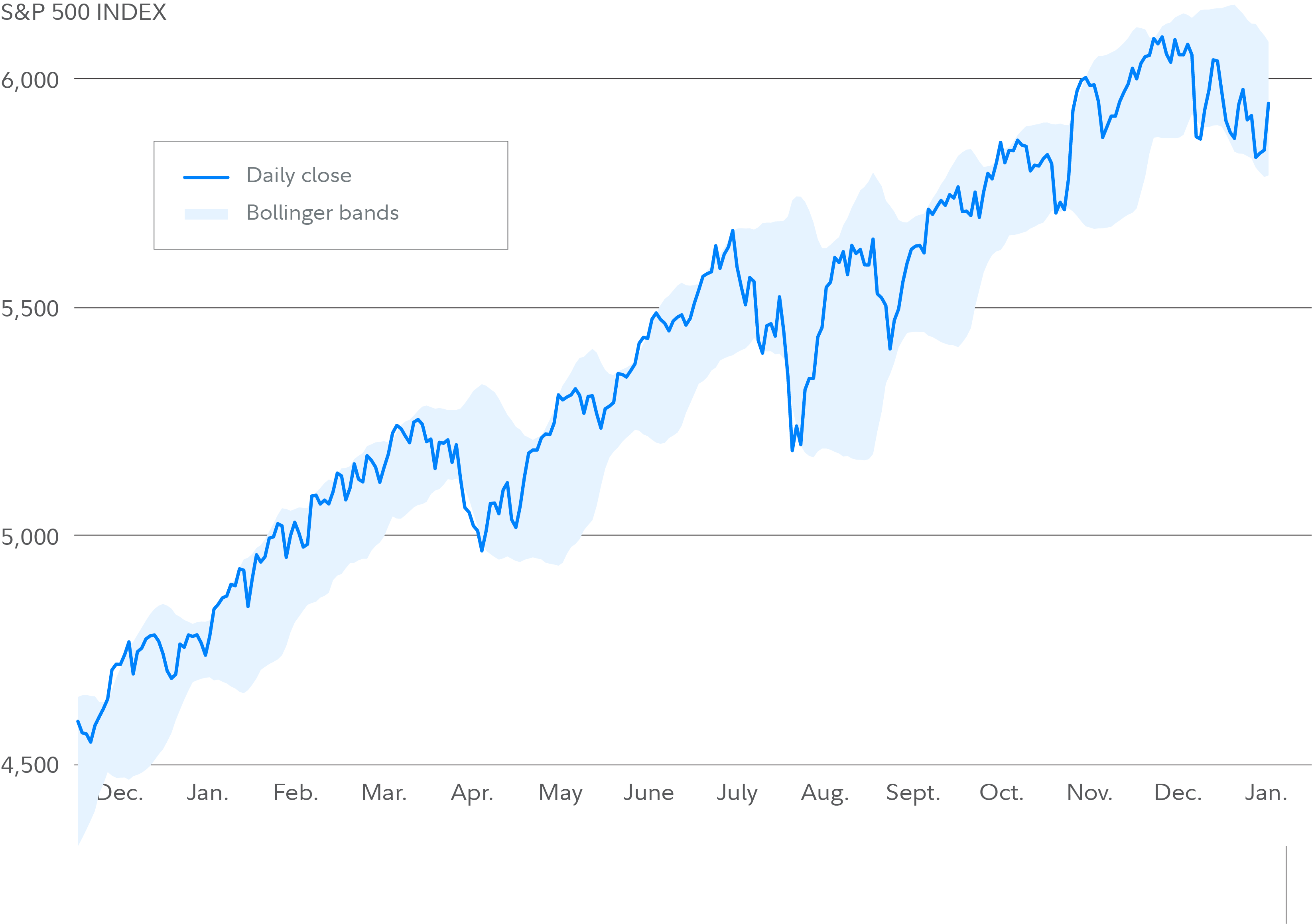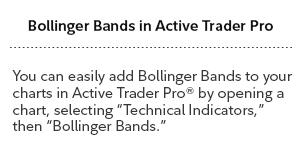Last year's momentum appears to have spilled over into 2025, at least thus far. The S&P 500 is up more than 1% year to date, with energy and materials (2 of 2024's underperforming sectors) propping up the broad market. What are the charts saying? One technical indicator—Bollinger Bands—could confirm the positive start to the year for stocks.
How to use Bollinger Bands
Bollinger Bands are a short-term trading tool that can help you decide when to make your move by assessing the relative strength or momentum of an investment.
This indicator looks like an envelope that forms an upper and lower band around the price. Between the 2 bands a moving average can be plotted—typically a short-term simple moving average (SMA).1 In addition to other signals, John Bollinger, who created this indicator, considers the price relatively low (attractive) if it is near the lower band and relatively high (overvalued) if it's near the upper band.
What the bands say about stocks now
Currently, the S&P 500 has moved from the lower part of the band to the middle. If stocks stay within the band, some traders might look for a buy signal if stocks cross above the moving average and the upper part of the band would become the new target. If stocks cross below the moving average, that would be a sell signal and the lower part of the band would become the new target.

In addition to moves within the bands, price moves outside of the bands can generate signals. If the S&P 500 were to move lower and there is a breakthrough of the lower part of the band, that would generate a sell signal by breaking through a support level. Alternatively, if the S&P 500 were to rally and there is a breakthrough of the upper part of the band, that would generate a buy signal by breaking through a potential resistance level.
Volatility and Bollinger Bands
Bollinger Bands can also help assess volatility. Narrowing Bollinger Bands (i.e., when the bands move closer together) could suggest that volatility is decreasing—as investor sentiment potentially becomes more optimistic or complacent. A Bollinger Band "squeeze" occurs when volatility reaches a relative low. This squeeze can be followed by a period of increased volatility and may result in a significant move by the stock to the upside or the downside.
When the bands separate by a large amount, volatility may be seen as increasing and any existing trend may be ending. While Bollinger Bands for the S&P 500 have widened somewhat in recent months, it is not by an unusual amount, and thus the bands are not currently suggesting a strong move based on volatility.
Advanced use of Bollinger Bands
An advanced application of Bollinger Bands involves another indicator: the relative strength index (RSI). Bollinger Bands can be applied around the RSI line to assess additional buy and sell signals.
When RSI is near an extreme high (~100) or low (~0), and is touching either the high part of the upper band or the low part of the lower band, the RSI line could pull back sharply from the band. Bollinger Band analysis holds that a failure of RSI to touch the upper band on a second try generates a sell signal. At extreme lows, a failure of RSI to reach the lower band triggers a buy signal. This is similar to double top and double bottom patterns, respectively, that can occur for the price. Currently, RSI is not near extreme highs or lows.
Using Bollinger Bands
It goes without saying that you shouldn’t make investing decisions based only on the signals given by a single indicator or data point. Bollinger Bands can be used in combination with other research, and you should always consider the risk that the signal does not pan out. But if you actively trade, keep an eye on as much information as you can—including what’s happening in the charts.



